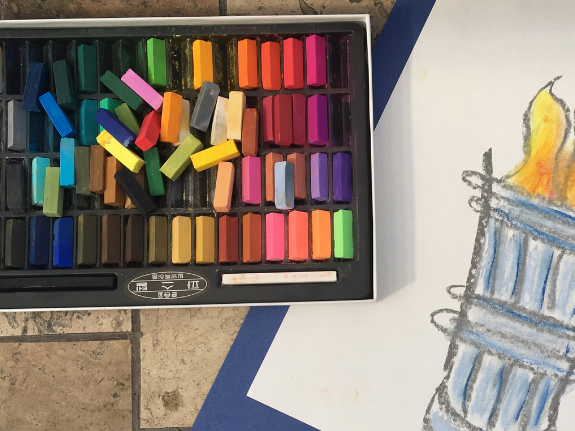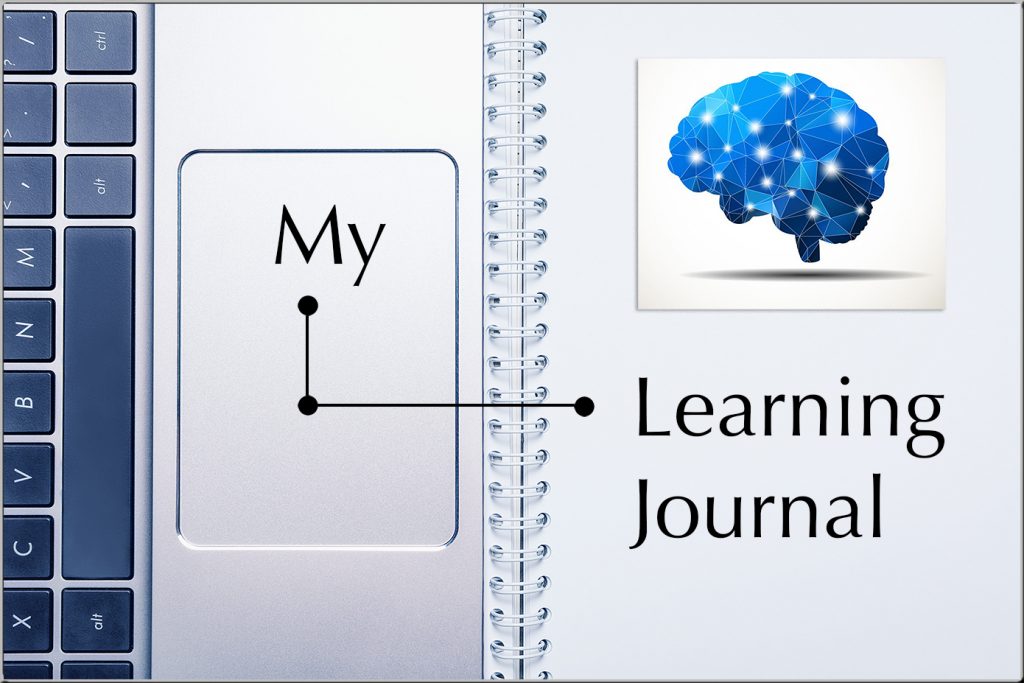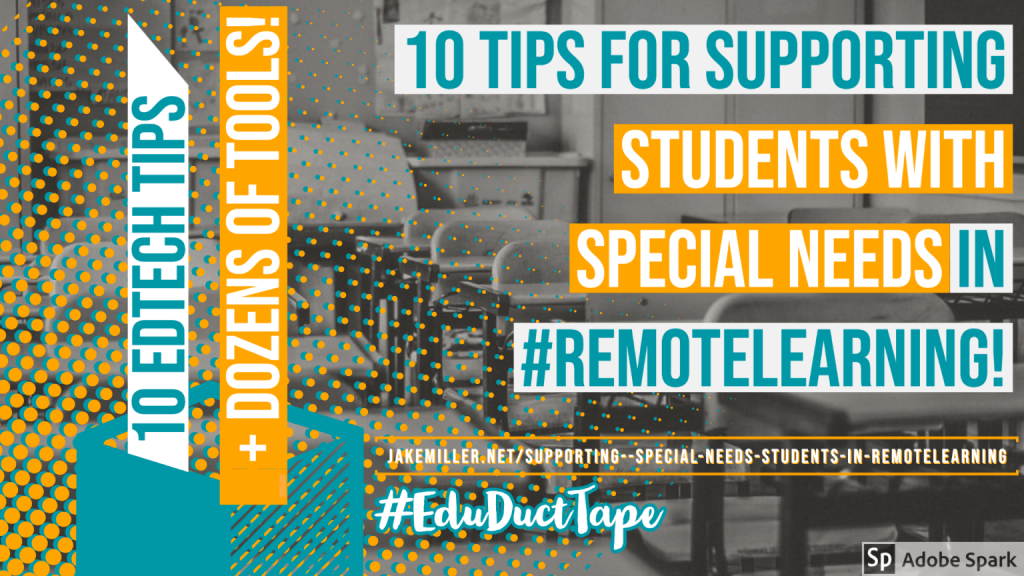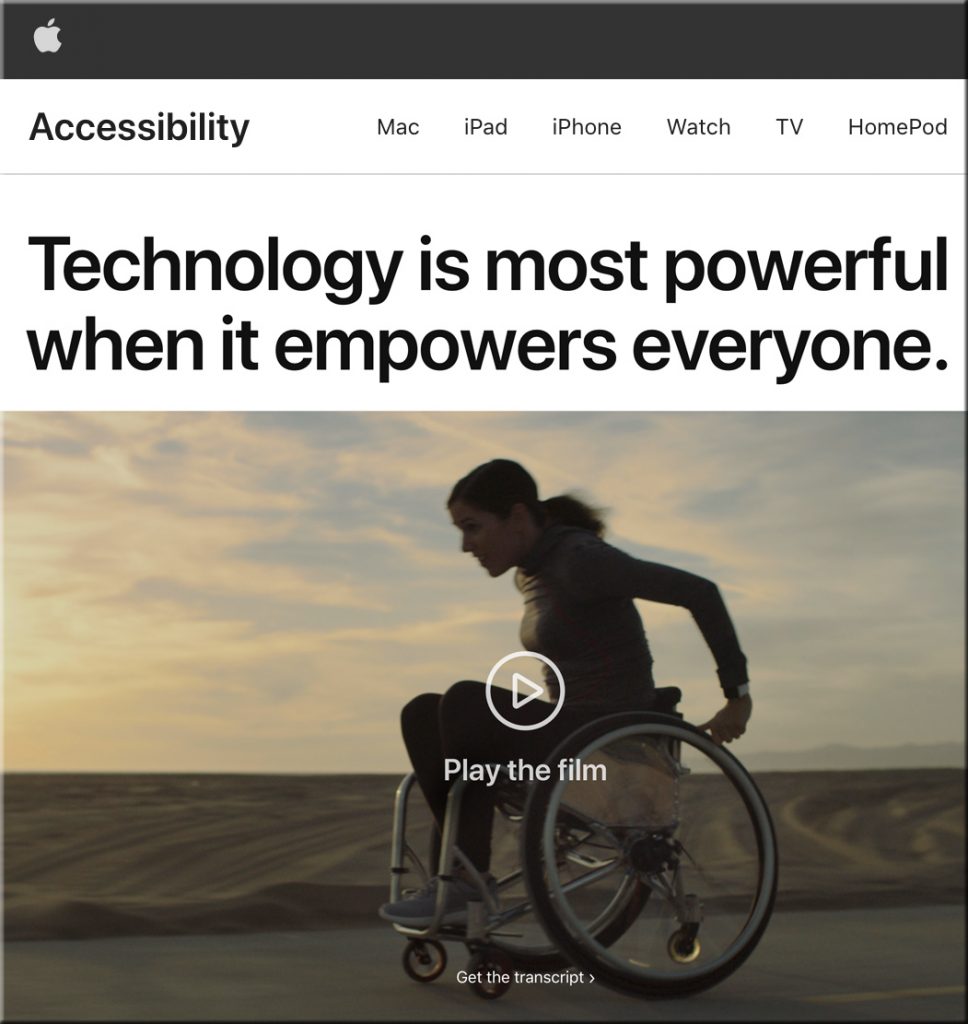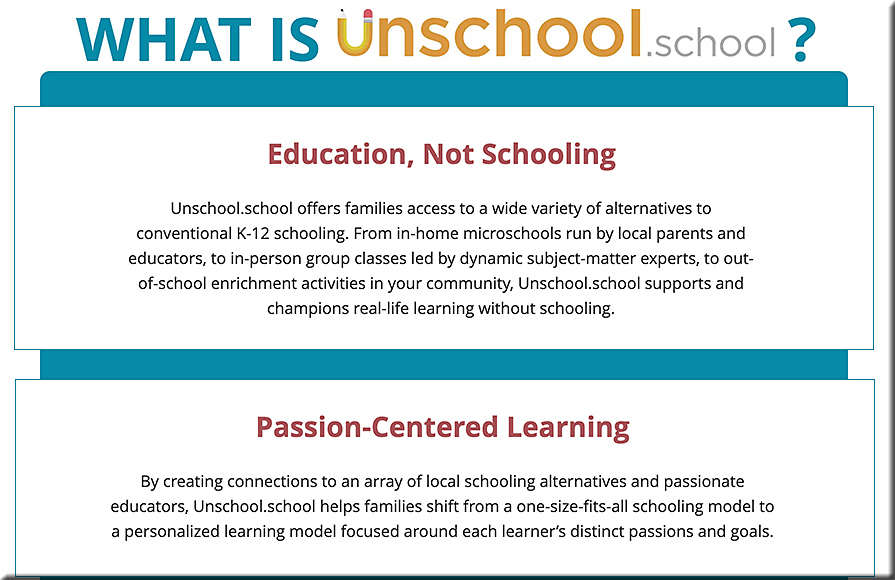Why art is so helpful for children with anxiety — from differentbydesignlearning.com; with thanks — and a shout out — going to Colleen Kessler for sharing this out on Twitter.
Learning ecosystems across the country — especially those involving K-12 — are morphing once again.
Have you heard about the explosive interest and potential growth involving “learning pods” — also called “pandemic pods”!?! It’s amazing to see how quickly things are changing in this fluid situation. This is another great example of how the macro-learning ecosystem for K-12 is changing — as well as the changes happening at more of a micro-level. (To see how true this is, put a Google Alert or two out there for “learning pods,” “pod learning,” and/or “pandemic pods.”)
For some information about these changes, see some of the example articles below:
- Some Parents Considering ‘Pod Learning’ Instead Of Returning To Classrooms This Fall — from newyork.cbslocal.com
- The Pros and Cons of Pandemic Learning Pods — from people.howstuffworks.com by Carrie Whitney
Excerpt:
What Is a Learning Pod? The idea of learning pods and micro-schools didn’t arise in response to the COVID-19 pandemic, though the concept has gained popularity because of it. Maureen O’Shaughnessy, Ed.D. published the book “Creating Micro-Schools for Colorful Mismatched Kids” in 2019. She’s also founder of the Micro-School Coalition, and believes micro-schools and learning pods should be unique and “reflect the values of the community that they serve.” Rather than acting as a specific model, the coalition serves only as an example of how to feature small classrooms with multi-age students; and innovative teaching models with personalized learning and holistic curriculums. - What are ‘micro-schools’ and ‘pandemic pods’? — from today.com by Ashley Capoot
“This is real. This is not just a niche interest anymore.”
- As school starts online, parents need to study up on ‘pandemic pods’ – and what they mean for equity — from usatoday.com by Wyatte Grantham-Philips
Excerpt:
Some families are “poding up.” Learning pods, also dubbed “pandemic pods,” are small groups of families that agree to do supplementary learning or complete at-home coursework together. Sometimes they hire a tutor. Sometimes they share the supervision among parents. - Homeschool pods are gaining traction amid worries about school reopening; here’s how parents are getting the finances to work — from USA Today by Aimee Picchi
- ‘Pandemic Pods’ Raise Concerns About Equity — from npr.org by Anya Kamanetz
- Pediatrician Warns Learning Pods Without COVID-19 Protocols May Be Riskier Than Schools — from sanfrancisco.cbslocal.com
- POD Learning. Parents, Let’s Work Together to Form Family Pods — from tapinto.net by Jessica Bush
Excerpts:
As students and parents prepare for an uncertain back-to-school season, the concept of pandemic pods has risen in popularity, and in practice. But these pods are likely to exacerbate preexisting inequality, and intensify the loaded debate over “school choice,” which has a complex history when it comes to race and class. - Pandemic pods are inequitable and inevitable — and a dream come true for the school choice movement — from businessinsider.com by Juliana Kaplan
From DSC:
Though very interesting to see what occurs here, I, too, am concerned about the inequalities and the potential for expanding the learning gaps across the country (between the folks who have the resources and those folks who do not). For example, consider that the cost ranges from $1,500 to $2,500 dollars per student — per month — in the San Francisco Bay Area. (See COVID-19 learning pods: Here’s how they work and what Bay Area schools say about them by Luz Pena.) Or see
- San Diego County parents creating ‘student pods’ and hiring teachers as substitute for virtual learning — from cbs8.com by Shannon Handy
Some families can’t afford to hire outside help to aid in virtual learning
A paramedic has found an innovative way to communicate with hard of hearing patients while wearing a face mask. pic.twitter.com/vGB6kIvTWp
— NursingNotes (@NursingNotesUK) July 17, 2020
From DSC:
My dad is hard of hearing and the issue continues to get worse, though his hearing aids do help some. I’ve been looking for an app that could take what’s being spoken — in real-time — and write it out for him on a device (iPad, iPhone, other). But the WiFi network is not available at the retirement home where he’s at. So this needs to work off of a cellular connection. If you know of some solid apps in this regard, please leave a note in the comments section. Thanks!
Items mentioned in a video I saw the other day, but may have different applications:
- Big (letters start big and get smaller)
- Live Transcribe (Android only)
- The American Sign Language (ASL) app
- Cardzilla
- Ava
The 2020 Kessler Foundation National Employment & Disability Survey: Recent College Graduates — from kesslerfoundation.org; with thanks to Nicky Miller for this resource
Per Nicky:
In a nutshell, this first-of-its-kind survey revealed factors that help people with disabilities find employment, including the importance of higher education, advisory services and networking. Also discussed in detail, are myths and barriers that people with disabilities often face. Learn about our survey, visit: www.kesslerfoundation.org/
To highlight factors in our survey, we’ve interviewed three young adults with disabilities, who share their college to work experiences. They discuss in detail the ups and downs of their academic and employment careers. Watch here: Webinar Part 2 – The ADA Generation and the Workplace: Recent College Graduates with Disabilities Speak Out
In some cases throughout the years, people with disabilities were told they shouldn’t further their education, and in other instances, they are discouraged from working. This survey dispel these ideas. People with disabilities are conquering barriers and broadening their education.
COVID-19 Intensifies Need to Tackle Digital Accessibility — from campustechnology.com by By Glenda Sims
More learning content than ever before has migrated online, bringing accessibility concerns to the forefront. Here’s how higher ed institutions are making progress toward equitable access.
Excerpt:
Accessibility lawsuits in education are not new. However, with colleges and universities undertaking their own digital transformations (moving more content and services online), lawsuits targeted at equitable access to physical facilities (like bathrooms) have logically expanded to digital offerings for students relying on assistive technologies to access them. The current COVID-19 crisis is likely to exacerbate this, as more learning content than ever before has migrated online in these unprecedented times. Persons with disabilities will demand nothing less than completely equitable access, particularly when it comes to their safety. While many higher ed institutions still have much to do for their accessibility initiatives, there have been many promising developments…
ECAR Study of the Technology Needs of Students with Disabilities, 2020 — from er.educause.edu by Dana Gierdowski and Joseph Galanek
Technology in higher education can be both an aid and a challenge for students with disabilities. Institutions and instructors can take steps to ensure that these students have equitable access, and those same measures can help all students, particularly during the era of emergency remote teaching.
Excerpt (emphasis DSC):
We asked students, “What is ONE thing you would like your instructors to do with technology to enhance your academic success?” In our analysis of their responses, we identified two overarching themes, as well as prominent patterns within those themes:
- Online Access to Materials and Resources
- Class notes and slides
- Assignments, tests, and quizzes
- Recorded lectures
- The LMS and the user experience
- Teaching with Technology
- Mobile devices in the classroom
- Training students and faculty in using technology
- Multiple methods of presenting course materials
- Engagement through the use of technology
Access other materials: Executive Summary | Infographic
Also see:
Remote Therapy for Special Needs Students Finally Viewed as Viable Option — from thejournal.com by Dian Schaffhauser
Excerpt:
“If there is a silver lining to this terrible virus, it is that out of necessity school districts have become more open to remote learning,” noted CEO Geneve Milne in a blog post. “This is a really important evolution because now school districts that have struggled to recruit speech language pathologists are likely to be more comfortable offering teletherapy to their students. This will help ease the lack of trained, licenses speech-language pathologists available to districts and help districts be more prepared when external forces keep students away from their special needs educator.”
From DSC:
Here’s an idea that I’ve been thinking about for quite some time now. It’s not necessarily a new idea, but the seed got planted in me by a former colleague, Quin Schultze (which I blogged about in January of 2018). I’m calling it, “My Learning Journal.” The purpose of this device is to promote your metacognition — helping you put things into your own words and helping you identify your knowledge gaps.
I realize that such a learning strategy/tool could take some time to complete. But it could pay off — big time! Give it a try for a few weeks and see what you think.
And, with a shout-out to Mr. James McGrath, the President of the WMU-Cooley Law School, the article listed below explains the benefits of taking the time for such reflection:
Reflective learning – reflection as a strategic study technique — from open.edu
Excerpts:
Rather than thinking of reflection as yet another task to be added to your ‘to do’ list or squeezed into a busy study schedule, view it as something to practice at any stage. The emphasis is on being a reflective learner rather than doing reflective learning.
Developing a habit of reflective learning will help you to:
- evaluate your own progress
- monitor and manage your own performance
- self-motivate
- keep focus on your learning goals
- think differently about how you can achieve your goals by evaluating your study techniques, learning strategies and whether these best fit your current needs, identifying your skills development needs or gaps in knowledge
- think about and overcome what may be blocking your learning by using a different approach, or setting more pragmatic (realistic/achievable) goals
- support and enrich your professional practice ensuring that you are better placed to respond to and manage new, unexpected and complex situations – a key requirement at Master’s level.
From DSC:
Pastors, trainers, K-12 educators, student teachers, coaches, musical teachers, and others: Perhaps a slightly modified version of this tool might be beneficial to those with whom you work as well…?
And for educators and trainers, perhaps we should use such a tool to think about our own teaching and training methods — and what we are (or aren’t) learning ourselves.
Addendum on 5/14/20:
Perhaps someone will build a bot for this type of thing, which prompts us to reflect upon these things. Here are some examples of what I’m talking about or something like Woebot, which Jeremy Caplan mentioned here.
10 Tips for Supporting Students with Special Needs in #RemoteLearning — from jakemiller.net by Jake Miller
Excerpt:
How can we support learners with special needs in remote learning?
While, certainly, some educators are doing great things to support these students, from my observations, this has taken a backseat to other elements of remote learning. And these students NEED OUR HELP.
Unfortunately, I am not an expert in special education, accessibility features or assistive technology. I am, however, skilled at asking other people to share their expertise. ? So, in episode 40 of the Educational Duct Tape podcast and in the 4.8.20 #EduDuctTape Twitter Chat I asked educators one simple question:
How can we support learners with special needs in remote learning?
And they DELIVERED. I mean, the awesome suggestions and resources, all from a perspective of support rather than judgment, POURED in. And so, here they are.
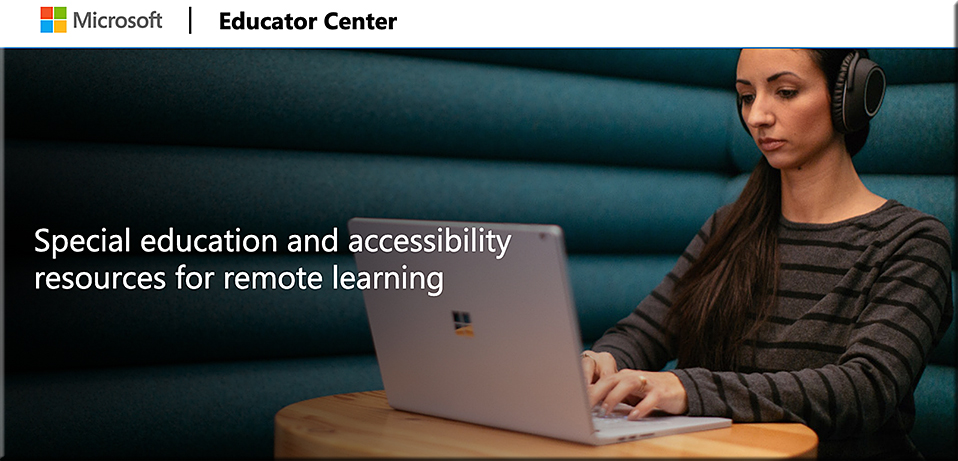
Special education and accessibility resources for remote learning — from education.microsoft.com
Excerpt:
For special educators, diversity demands they provide inclusive, accessible learning environments that inspire confidence and encourage independence differently for each student. Learn about how to create a personalized and engaging remote learning experience for all of your students through the resources provided in these pages.
These resources are intended for all educators, but will be especially helpful for educators and support staff who work in the following areas: special education, assistive technology, blind and visually impaired, deaf and hard of hearing, occupational therapy, physical therapy, speech language pathology, early childhood special education, behavior, counseling, school psychology, language interpretation, literacy, autism, and many other areas that assist students who need specially designed instruction.
From DSC:
NOTE: The K-12 education system that I’m talking about in this posting is the pre-COVID-19 education system.
What Cory Henwood describes here…
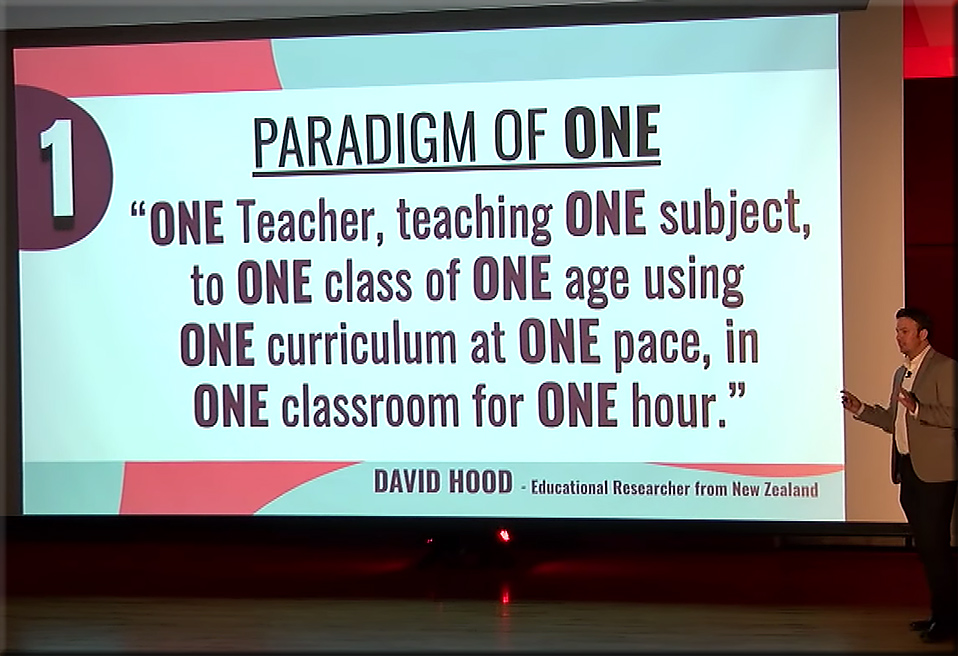
…is what I describe as the quickly moving K-12 education train that stops for no one!

(image source)
This becomes especially troublesome for those on either side of the 80% bell curve. I know about this, as one of our daughters has been living through this phenomenon for years. We are seriously considering homeschooling for her as we want her learning experiences to be more positive ones for her. We want to provide more choice, more control for what she wants to learn about — and the pace at which she can go through those experiences. We want there to be more joy in her learning experiences. This will hopefully help her build more positive perspectives about learning in general.
This is not a mute issue…nor is this a topic that’s focused on just students with special needs. In fact, this topic is relevant to every single student in America — as everyone is now required to be lifelong learners these days. Grades need to diminish in importance. The enjoyment of learning needs to rise.
Note: There were some times in public and charter schools that provided courses and topics of great interest to her, and provided some great joy to her. Plus, there were some incredibly-dedicated teachers and staff that created a team around our daughter. I’m very grateful for them and for their efforts. But positive learning experiences were becoming too few and too far between. The train left the station *for everyone* at such-and-such a time, and stopped *for everyone* at such and such a time. The education system required that she and her classmates move at a certain (high) speed — regardless of their mastery of the content. Teachers know what I’m talking about here…big time.
We need to get to what Cory discusses about when he discusses competency-based education.
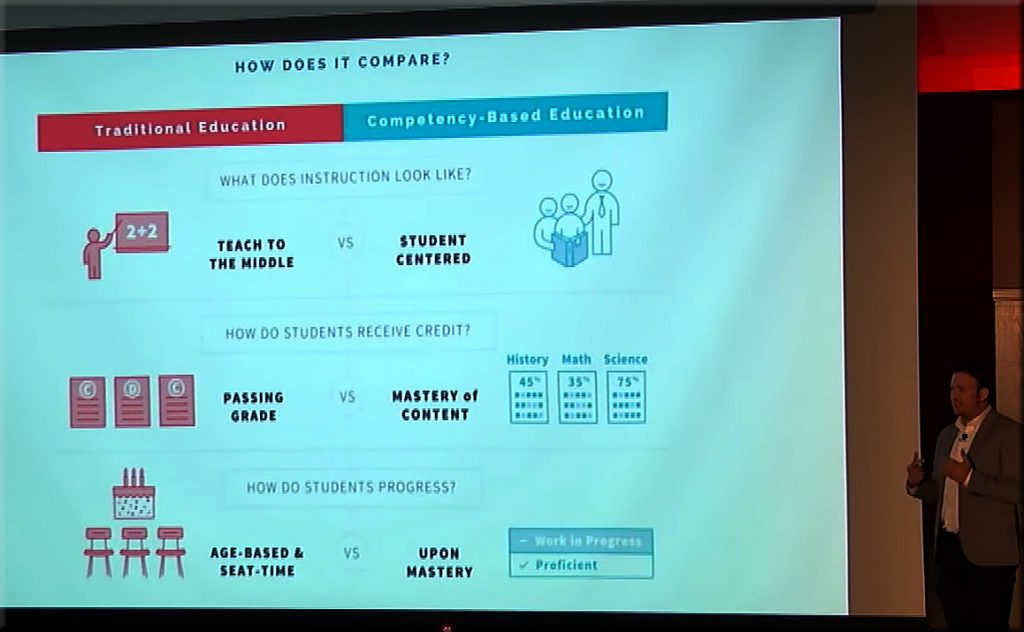
Plus, we need to get to a place where there is:

Educating all learners during COVID-19: An alliance emerges to provide support for virtual special education services — from gettingsmart.com by Rachelle Dene Poth
Excerpt:
One group that is developing a supportive space for educators looking to support students with disabilities during this time is the Educating All Learners Alliance (EALA), a group dedicated to equity and aimed at providing resources that students with disabilities need. The EALA is a collaborative project between a number of education groups to curate education resources specifically for schools that serve the nearly 7.5 million special needs students in America. Lauren Morando Rhim, co-founder and executive director of founding partner the National Center for Special Education in Charter Schools, explains the motivation for the project: “We’re already seeing schools finding creative and innovative ways to ensure teachers and students with disabilities can engage in teaching and learning remotely—our goal is to help educators share those strategies broadly with their peers.”
An Educator’s Guide to Virtual Learning: 4 Actions to Support Students With Disabilities and Their Families — from ncld.org / National Center for Learning Disabilities
Excerpt:
Begin implementing best practices in online special education. Most of the best practices in online instruction are the same as for in-person, in-school instruction. This includes using multiple ways to present content, assess progress, provide feedback, and engage students (the hallmark of Universal Design for Learning). Students will still need explicit instruction, and providing what amounts to virtual 1:1 or small group instruction to so many students will take creativity, planning, and flexibility. Here are some helpful resources:
- CEC’s High-Leverage Practices in Special Education
- Implementing Universal Design for Learning
- Center on Online Learning and Students with Disabilities
A Parent’s Guide to Virtual Learning: 4 Actions to Improve Your Child’s Experience With Online Learning — from ncld.org / National Center for Learning Disabilities
Excerpt:
Here are some resources that will help you be an effective partner with school personnel and an informed advocate for your child during this challenging time:
Homeschooling During the COVID-19 Pandemic — from cato.org by Kerry McDonald
Excerpt:
In a recent three-part Cato Daily Podcast series, I spoke with host Caleb Brown about this unprecedented educational moment, including sharing strategies and resources for overcoming the challenges of unexpected, unchosen homeschooling, as well as possible outcomes as more parents seek alternatives to conventional schooling post-pandemic.
More Free Resources For New Homeschoolers — from forbes.com by Nick Morrison
Excerpt:
Last month I highlighted some of the free resources available for parents — and teachers — during the pandemic, but since then a number of other organizations have offered their resources, expertise and support for free, so here is another selection, for the benefit of ordinary homeschoolers in these extraordinary times.
From DSC:
Below are excerpts from a recent email that I received as a cc: to our son and am passing it along in case it helps others out there.
I would like to share with you important guidance on how to get the most out of your online learning experience.
ORGANIZING YOUR SPACE
Set up your home classroom space. This is important. Be sure you have a space that is comfortable and where you can focus on your studies, your practice, your craft and your learning. This can be private or shared, whatever works for you and your family.
WHAT YOU WILL NEED
- Computer
- Internet Access, preferably high-speed broadband, is required for video conferencing and class assignments. Most of the expected work will not require streaming, but a secure internet connection will help a lot.
- Headphones help minimize extraneous noise. They can also help signal to others in your home that you are online and on-task.
- Zoom, our preferred video conferencing software, can be downloaded here.
SCHEDULE
You will complete your work and engage in your lessons in two ways. Some assignments are laid out in your Canvas class and can be completed at your own pace, turning work in when due. And some of your classes and lessons will require you to connect with faculty and students in real time. When a real-time option is possible, be sure to take it.
STAYING CONNECTED
Again, be sure to connect in real time as often as possible. There are lots of opportunities to connect with faculty and students every day.
…
Join in as many real time experiences as you can. These human connections, across the internet, are so important during this time when we are all separated physically.
NORMS FOR VIDEO-CONFERENCING
- Log in on time, and be fully prepared with any necessary materials, notebooks, etc.
- Wear clothes like what you would wear to school.
- Remain present and engaged throughout the session. Do not open additional windows or use other technology during the session, unless it is part of class.
- Join sessions in a quiet space, if you can, where you will not distract others and not be distracted.
- Mute your microphone when not speaking.
SUMMARY OF STUDENT RESPONSIBILITIES
- Establish a daily routine for your school work.
- Find a comfortable, distraction-free place in your home where you can work.
- Check email and Canvas each day to learn about the expectations for your work.
- Perform tasks as outlined by instructors in Canvas and seek clarification from teachers on any assignments where you need it.
- For classes meeting “live,” login to real-time video services (Zoom) for dialogue with teachers and members of your class. Attend faculty office hours. They want to see you!
- Put forth your best effort.
- Communicate with your instructors, your advisor, your residence life coordinator, and/or Academic and College Counseling.
- If you need anything, let us know.
Under the Table and Teaching: 11 Expert Tips for Schooling Kids with ADHD from Home — from additudemag.com
Unschooling. Homeschooling. Crisis schooling. What is the difference? And what are the best learning strategies for your child with ADHD at this stressful time? Here are tips and strategies from education experts who understand the distinctions and today’s inescapable realities.
Excerpts:
11 Ways to Support Learning at Home
-
- Focus learning on your child’s natural interests.
- If your child gets stressed, take a break.
- Make learning a game.
- Embrace Minecraft.
- Add movement to promote learning.
- Build focus with busy hands and feet.
- Tap into online tutors.
- Ditch the worksheets. Use educational videos, phone apps, educational podcasts, or other media to introduce or expand on a subject.
- Take things one day at a time.
- Follow your child’s lead.
- Accept that homeschooling may not work for you.
Research Quest Live sign up
Though the museum is currently closed, the Natural History Museum of Utah is allowing kids around the globe the opportunity to transport back in time to a past where dinosaurs roamed the world. With the recently launched Research Quest Live, offering a taste of the world with virtual tours and free access to daily online science classes taught by museum educators.
Common Sense Launches Wide Open School to Help Families and Educators Transition to Students Learning from Home — from commonsensemedia.org
As Schools Continue to Close as a Result of the Coronavirus Pandemic, Some of the Most Respected Companies in Education, Media, and Tech Join Forces to Offer a Free and Open Collection of Quality Online Learning Resources to Educators and Families.
Excerpt:
SAN FRANCISCO, March 31, 2020—Common Sense, the leading nonprofit organization whose mission is to help kids, families, and educators thrive in a world of media and technology, has convened a group of education, media, and tech partners to launch WideOpenSchool.org, a free online resource to support families and educators who are transitioning to remote learning as a result of the coronavirus.
Wide Open School features the very best resources from publishers, nonprofits, and education companies, including the American Federation of Teachers, Amplify, Boys & Girls Clubs of America, Head Start, Khan Academy, National Geographic, Noggin, PBS, Scholastic, Sesame Workshop,Time for Kids, XQ Institute, and YouTube. Find the full site at WideOpenSchool.org.









